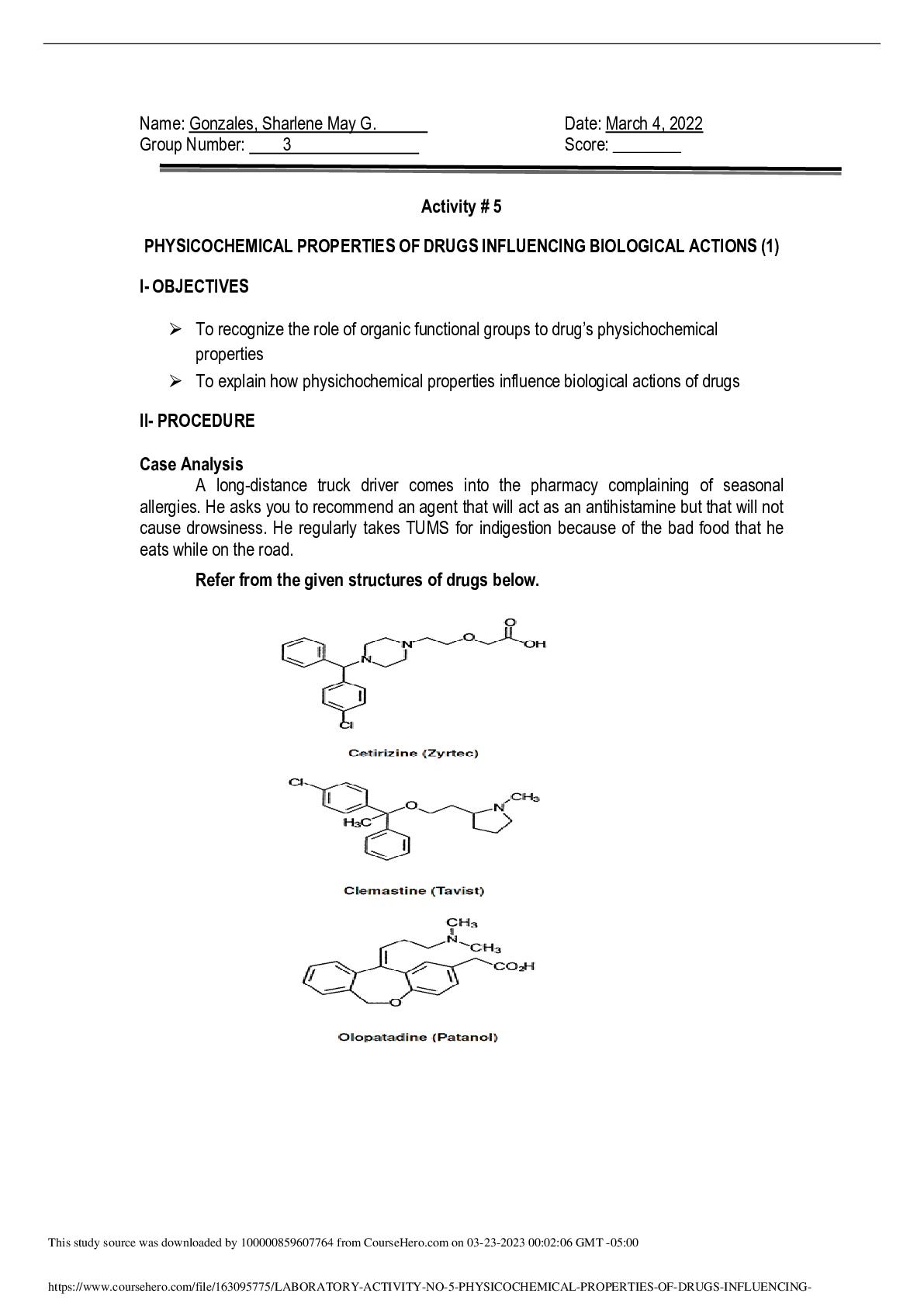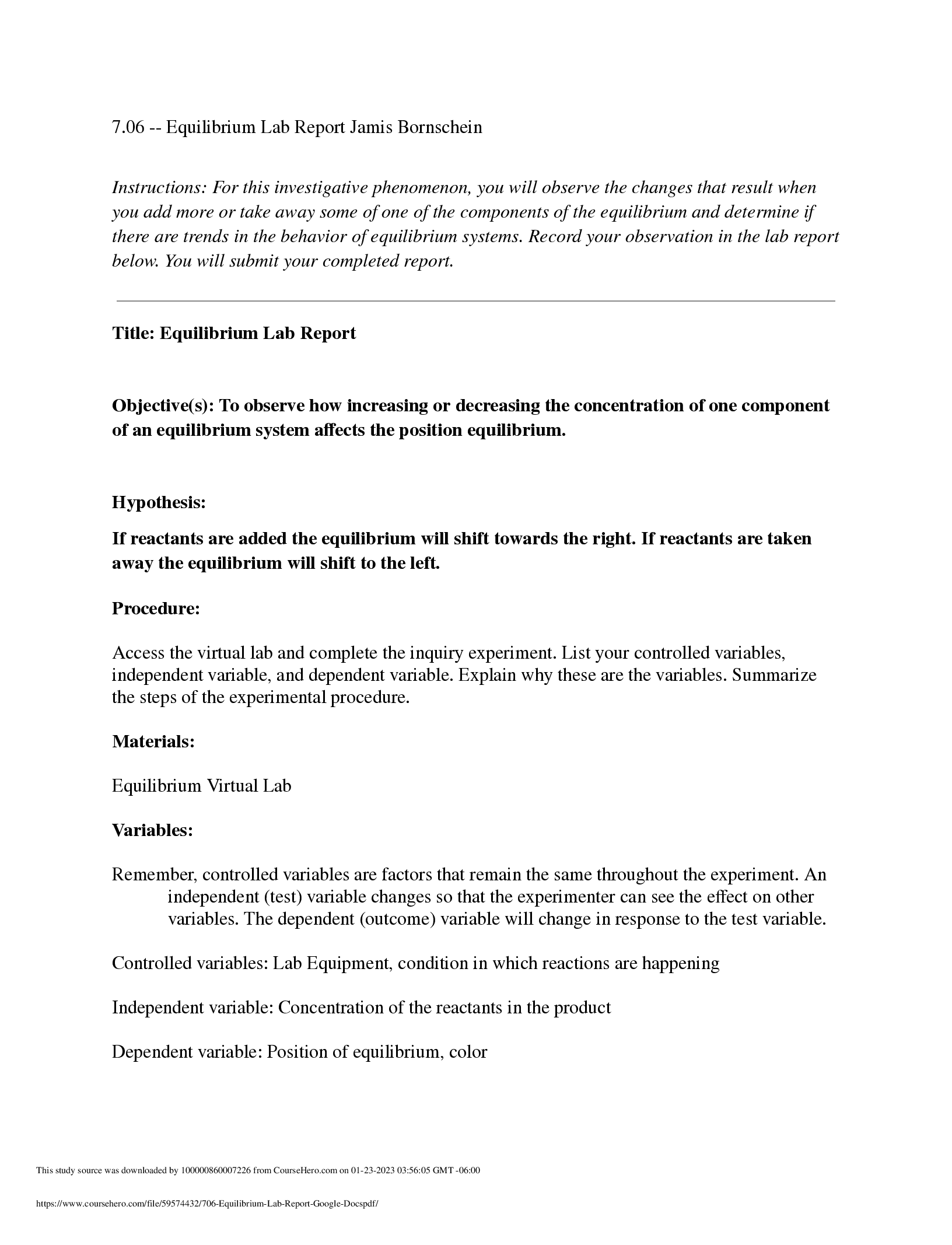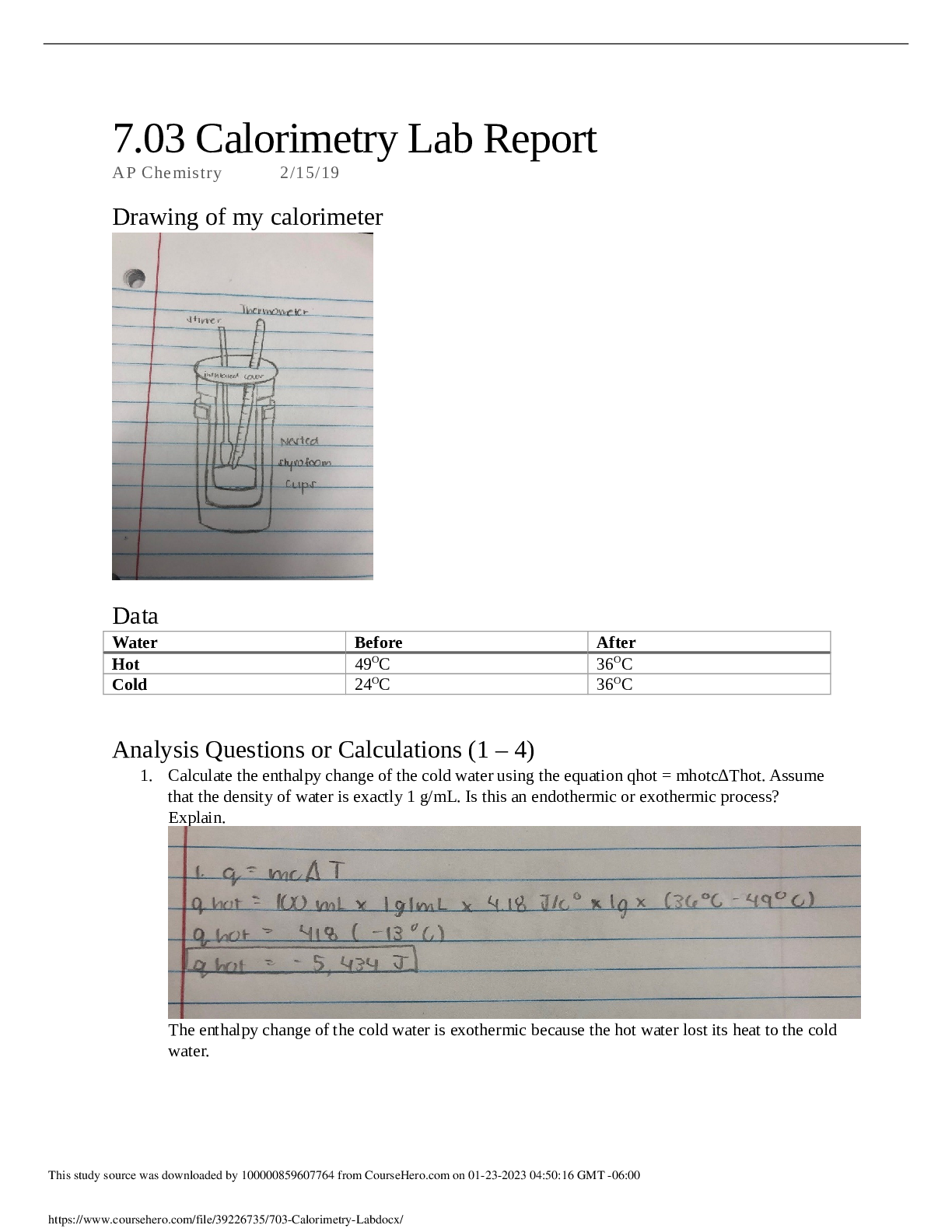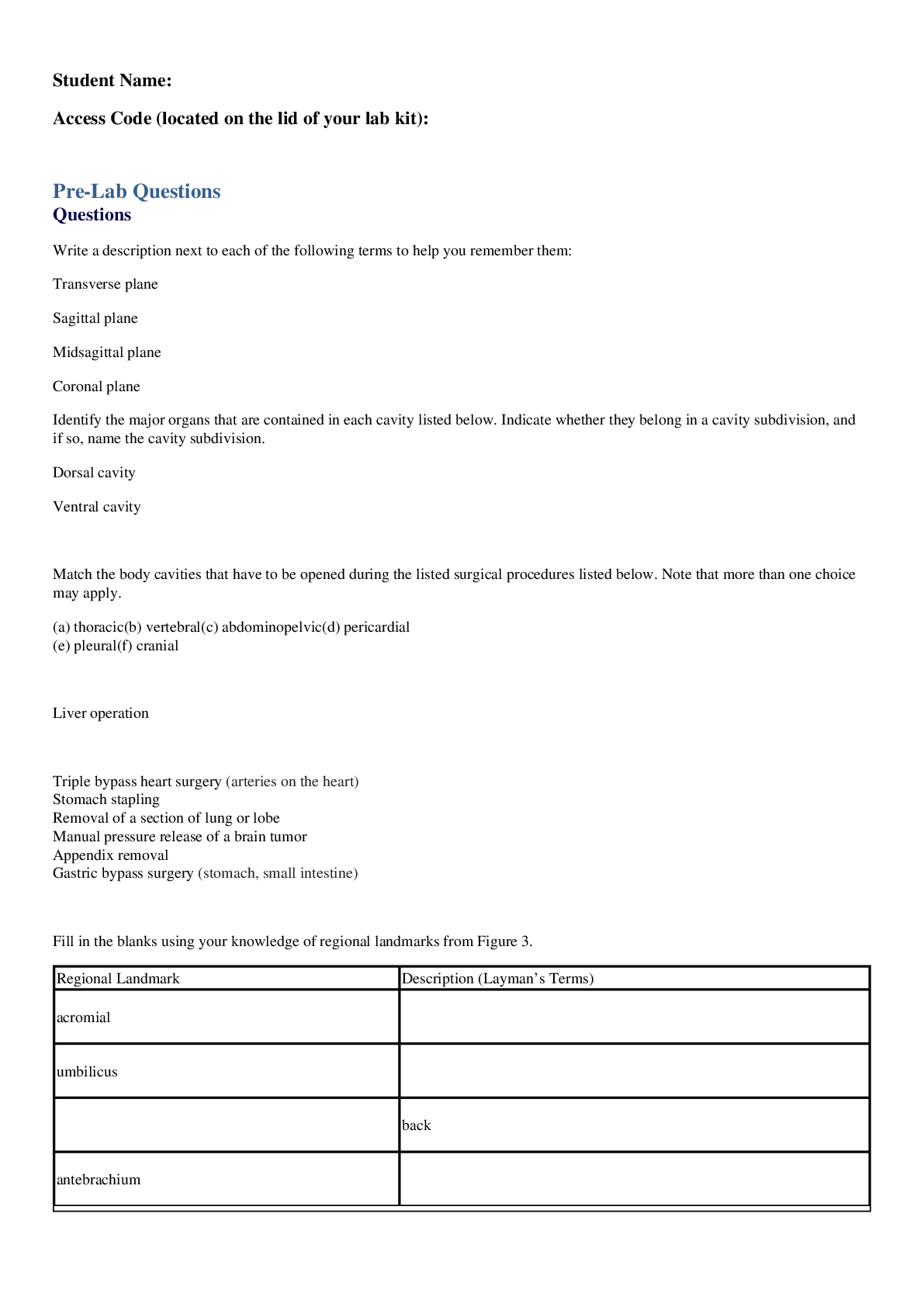Anatomy and Physiology - A&P 1 > Lab Report > BIOS 251 Week 5 Lab Assignment: Integumentary System (SOLVED) (All)
BIOS 251 Week 5 Lab Assignment: Integumentary System (SOLVED)
Document Content and Description Below
OL Lab 5: Integumentary system Learning Objectives: • Identify the tissue and cellular features of the skin. • Identify the structures associated with the skin. • Correlate the anatomical fe... atures to its functions. • Identify the role of the skin in thermoregulation and wound healing. Part A: Anatomy of the skin I. Microscopic anatomy of the skin. Complete the table using the image provided: II. Gross anatomy of the skin. Complete the table using the image provided. Structure Function A Hair Protection, regulation of body temp, and facilitation of evaporation B Cutaneous Blood Vessel Transport oxygen and nutrients to skin while removing wastes C Arrector pili muscle Muscles contract all at once causing hair to stand up on skin D Sebaceous gland Produce and secrete sebum which lubricates skin to protect against friction E Merocrine Sweat gland Sweat cools the surface of skin and reduces body temp F Hair follicle Cavity or sav from hair origination G Hypodermis Made of connective tissue; for support, thermoregulation, and stored energy H Pancinian corpuscle End of sensory nerve that acts as a receptor for pressure and vibration I Epidermis Provides waterproof barrier and creates skin tone and regulates body temp J Papillary region Provides nutrients to produce keratinocytes K Reticular region Serves skin with strength and elasticity 00084L9840424 DfroemrmCoisurseHero.com on 11-0 4C-2u0s2h2i1o0n:1s3:b43odGyMTfr-o0m5:00stress and strain Part B: Thermoregulation Use the diagram provided, to answer the questions. 1. Homeostatic regulatory mechanism involves atleast 3 independent components.Identify these components labeled as A, B, C in the diagram. A. Receptor B. Control Center C. Effectors 2. Describe in your own words the physiological events that would occur during this feedback mechanism. Thermoregulation is a form of negative feedback in maintaining homeostasis. When the body is cold then it will cause shivering, but with this you would only shiver due to muscles contracting to cause heat to warm you back up again. 3. Identify the condition that would occur due to increase in body temperature. The condition to occur is due to the increase in body temperature to hyperthermia. Hyperthermia happens when the bodys heat regulation becomes too much and gets overwhelmed causing ones internal temperature to increase. Part C: Skin Wound Healing- Anatomy TV Instructions: For this part of the lab, you will use Anatomy TV to watch an animation on skin wound healing. Please read the instructions before you begin. 1. Use the link below to log into Anatomy TV via Chamberlain Library. https://library.chamberlain.edu/az.php?q=. 2. Select Anatomy TV under popular databases to access the site. 3. Select the ‘Integumentary System’ tile: 4. Select topics and click on Skin Wound Healing. 5. Watch the animation to answer the questions below: 1. Compare and contrast the epidermal and dermal wound healing. The epidermal wound healing takes place in the epidermis. It happens when the epidermis has been penetrated. The dermis has deep wound healing that takes place when the dermis layer has been penetrated. 2. Describe the first step in wound healing. What its significance? The first step is hemostasis which begins at onset of injury and to stop bleeding. Vasoconstriction occurs during this as well. It forms blood clots to the injured area and begins acute inflammation. After the fact of the injury, the body then releases chemicals near the injury that triggers an immediate tightening of vessels. 3. Why is inflammation an important step in wound healing? Inflammation is an important step in wound healing because both control bleeding and prevents infection. It is characterized by influx of leukocytes to the wound. During the inflammation stage, the damaged cells, pathogens, and bacteria are removed from the wound. 4. What results in fibrosis during deep wound healing? When fibrosis occurs in deep wound healing it results in restoration. Part D: Case Studies: Read the case study. In your own words and in complete sentences answer the questions. Case Study 1 While preparing dinner Jane knocked a pan of boiling water onto herself. She suffered partial thickness burns to the anterior region of her legs. 1. What is partial thickness burns? Second-degree burns involve the epidermis and a portion of the dermis layer of the skin and are known as partial thickness burns. The burn site seems to be red, blistered, swollen, and painful. 2. Jane loose sensation of the affected area? Why? Because second-degree burns can induce nerve damage, Jan lost sensation in the affected area. It's also one of the most common burn side effects. 3. Using the Rule of Nines calculate the total body surface area percentage that is burned? The percentage of total body surface area that is burned is 36%. Case Study 2 Tom, a 14-year-old teenager, fell into the partially frozen pond during his walk with his friends. His friends rescued him and took him back to the car. On the walk back, Tom, started to show signs of hypothermia. 1. What is hypothermia? When your body loses heat faster than it can produce it, hypothermia develops, resulting in a dangerously low body temperature. Hyperthermia is defined as a temperature below 95 degrees Fahrenheit. 2. Which skin receptors detect a decrease in temperature? Thermoreceptors are specialized neurons in the skin that detect temperature changes. 3. Which control center monitors the signaling from these skin receptors? The thermoreceptor monitors the signaling from skin receptors. 4. What happens to the blood vessels in the skin during hypothermia? What is the purpose of this response? Vasodilation is the process of widening blood vessels. Vasodilation is the process of increasing blood flow to the body's tissues. 5. What will happen to the hairs in Tom’s skin? What is the purpose of this response? Tom's skin hair will rise to maintain heat. When the body is chilly, something happens. It acts as a form of insulation. 6. What would be the feedback mechanism involved to bring back Tom’s temperature back to normal? Negative feedback would be used to bring Tom's temperature back to normal, allowing the body's state to return to equilibrium. Grading Rubric: Activity Deliverable Points Part A (I & II) Skin Structure and Functions 10 Part B, C & D Answer all the questions - Part B - Thermoregulation - Part C – Skin Wound Healing - Part D –Case studies 5 5 10 Total Complete all lab activities 30 [Show More]
Last updated: 1 year ago
Preview 1 out of 7 pages
Instant download

Instant download
Reviews( 0 )
Document information
Connected school, study & course
About the document
Uploaded On
Nov 04, 2022
Number of pages
7
Written in
Additional information
This document has been written for:
Uploaded
Nov 04, 2022
Downloads
0
Views
64


.png)


.png)
.png)
.png)
.png)
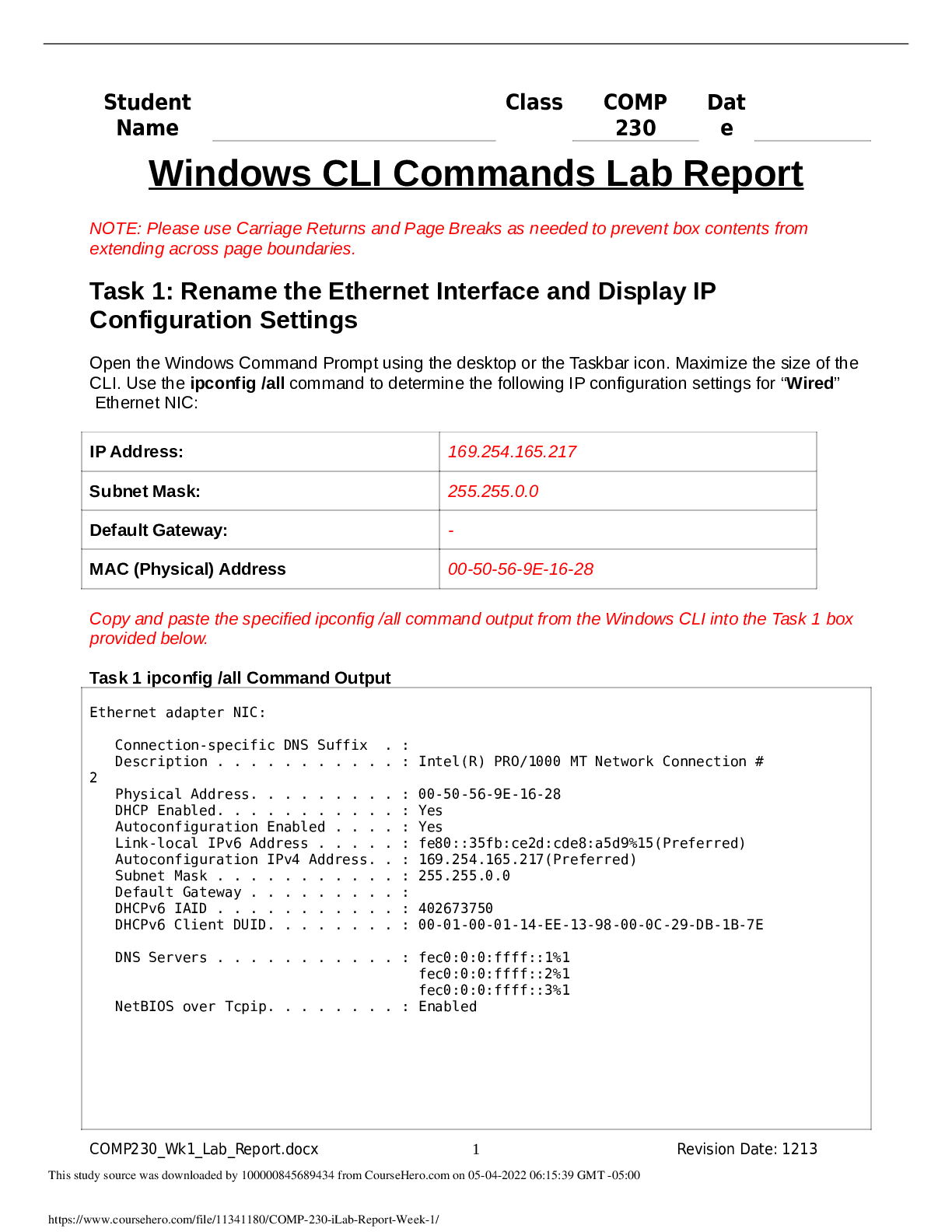



 (1).png)




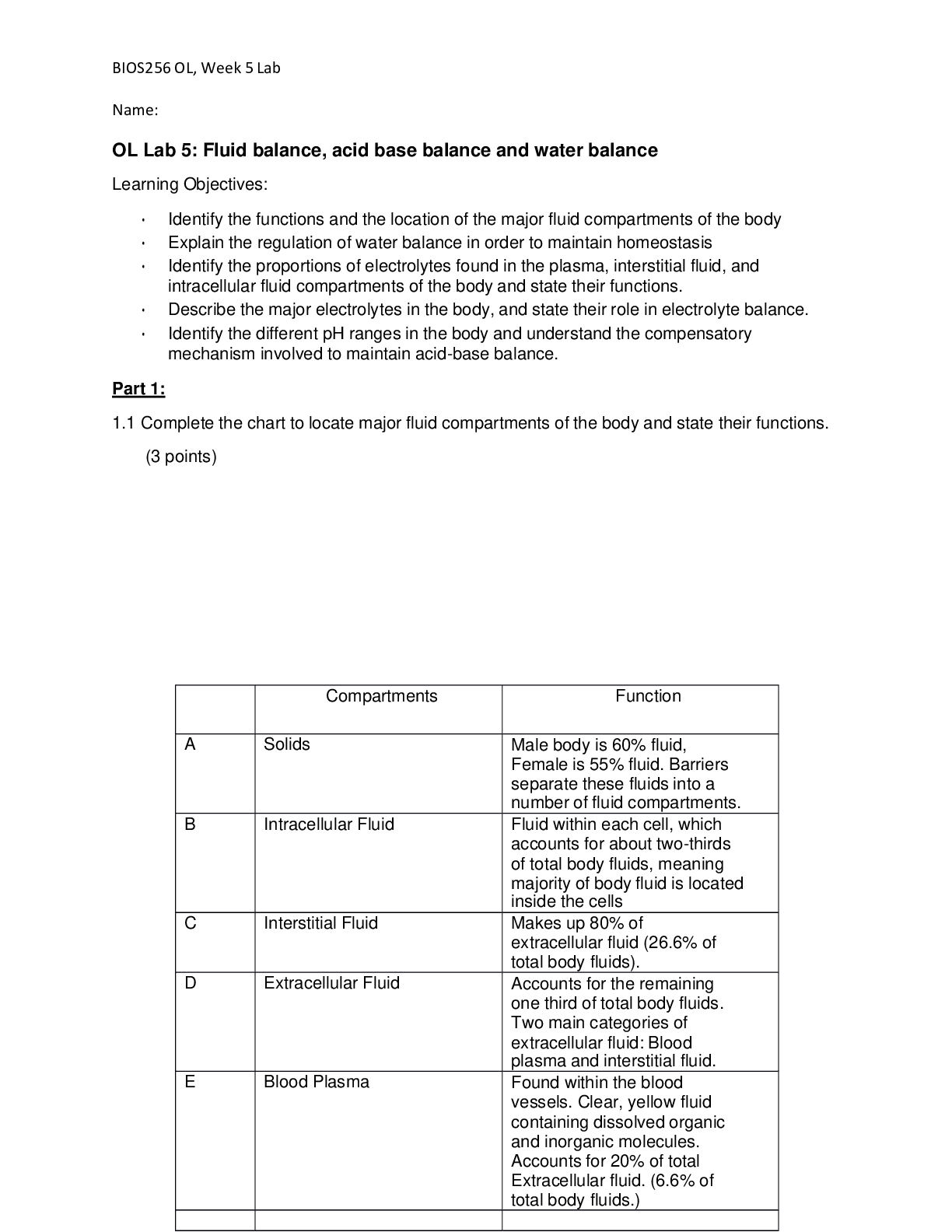

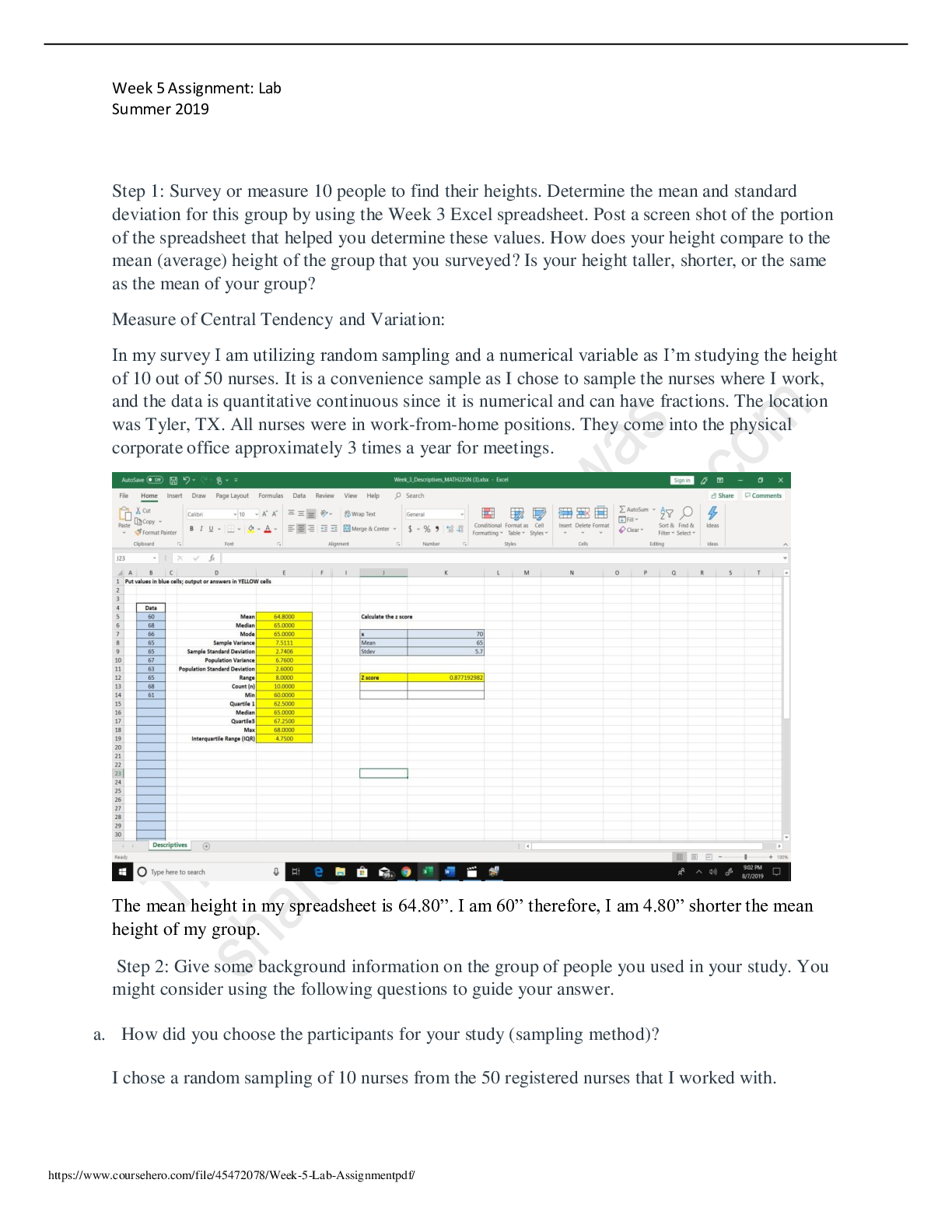

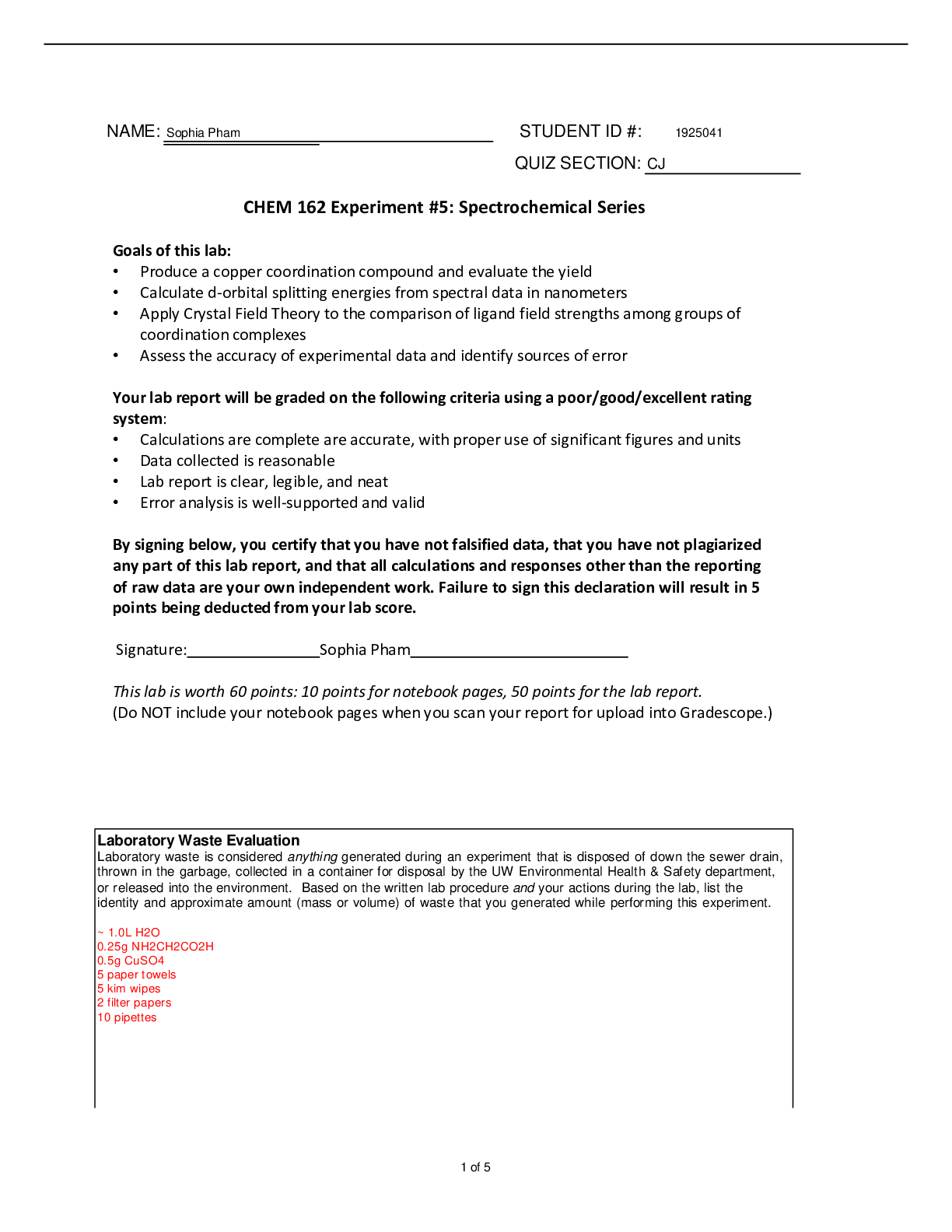
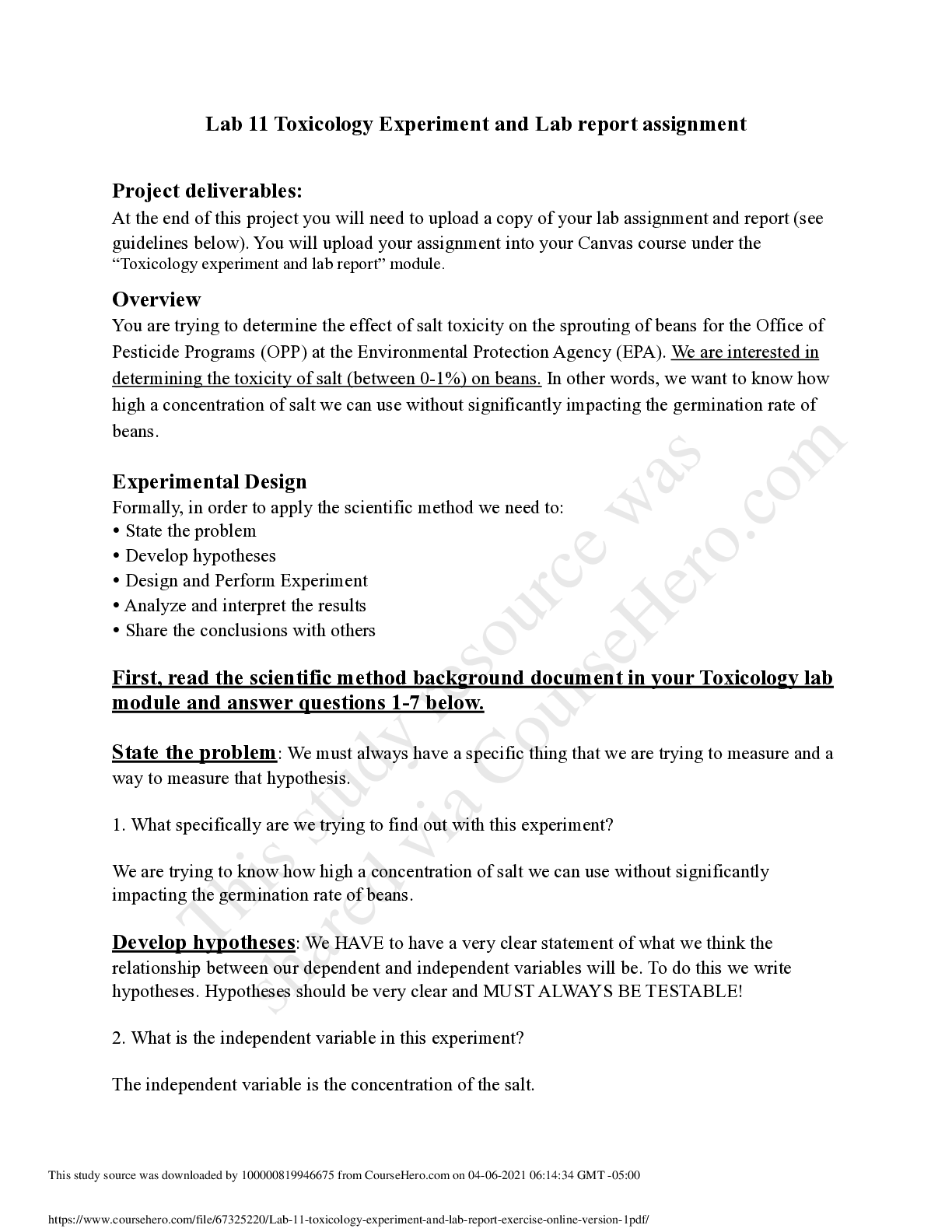
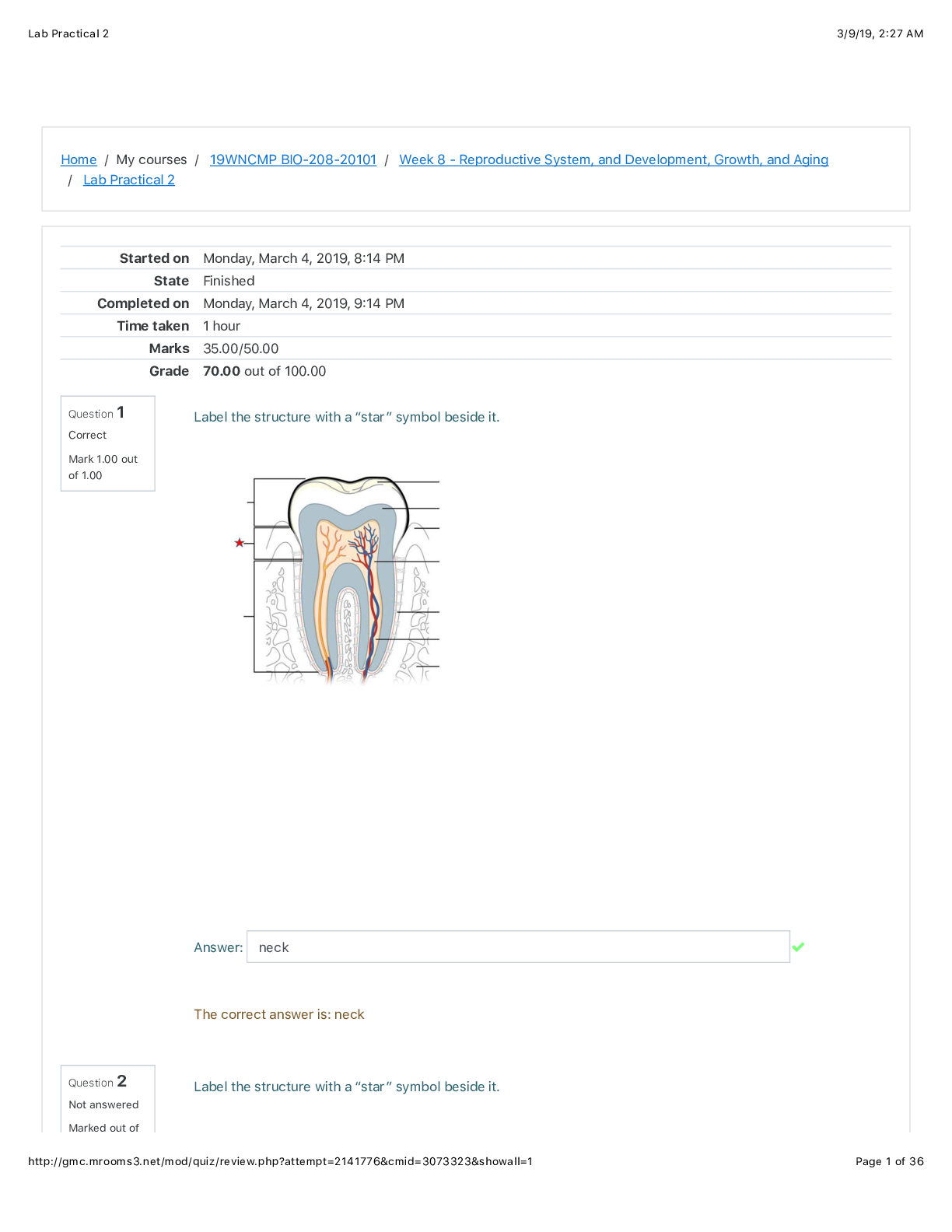

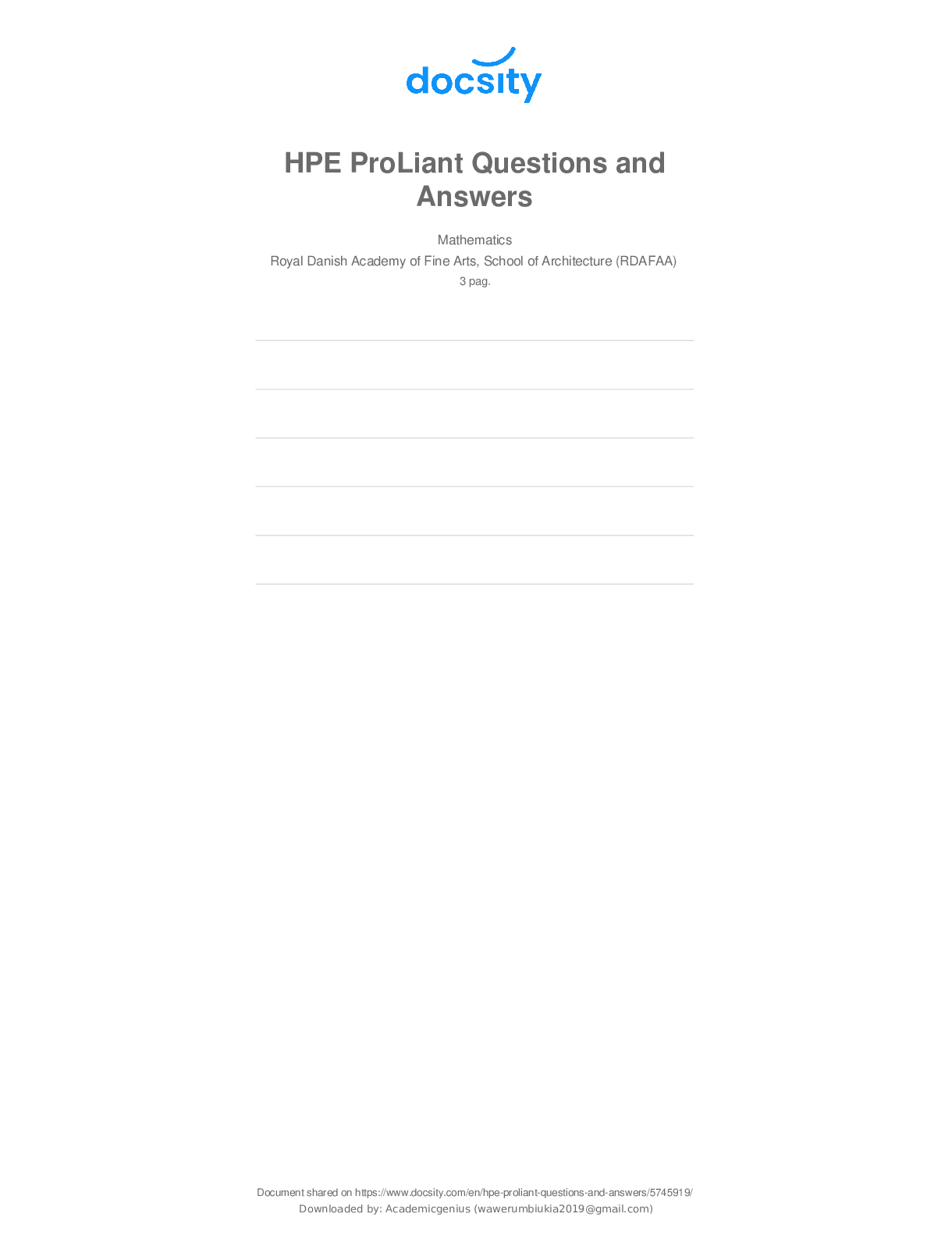
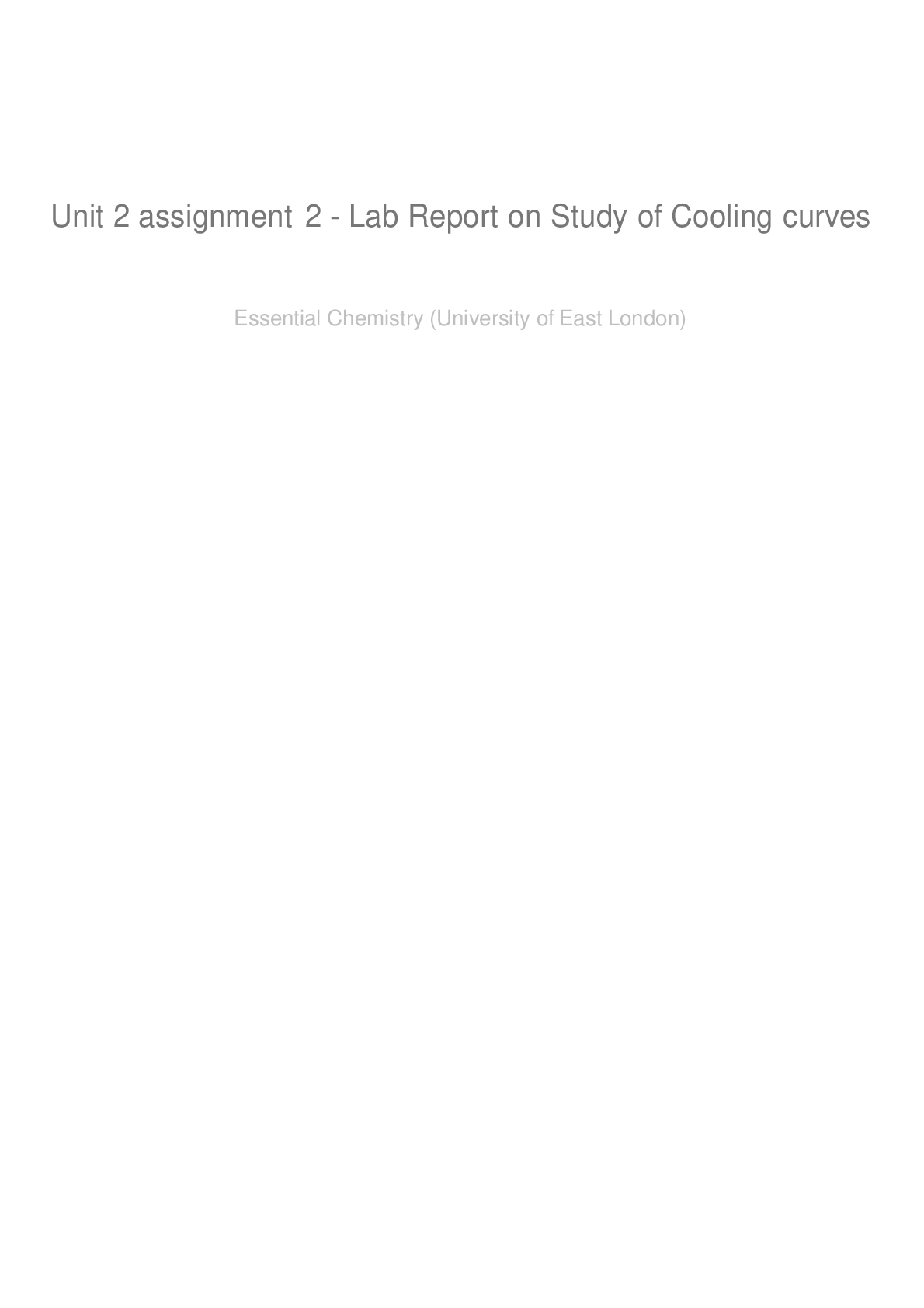
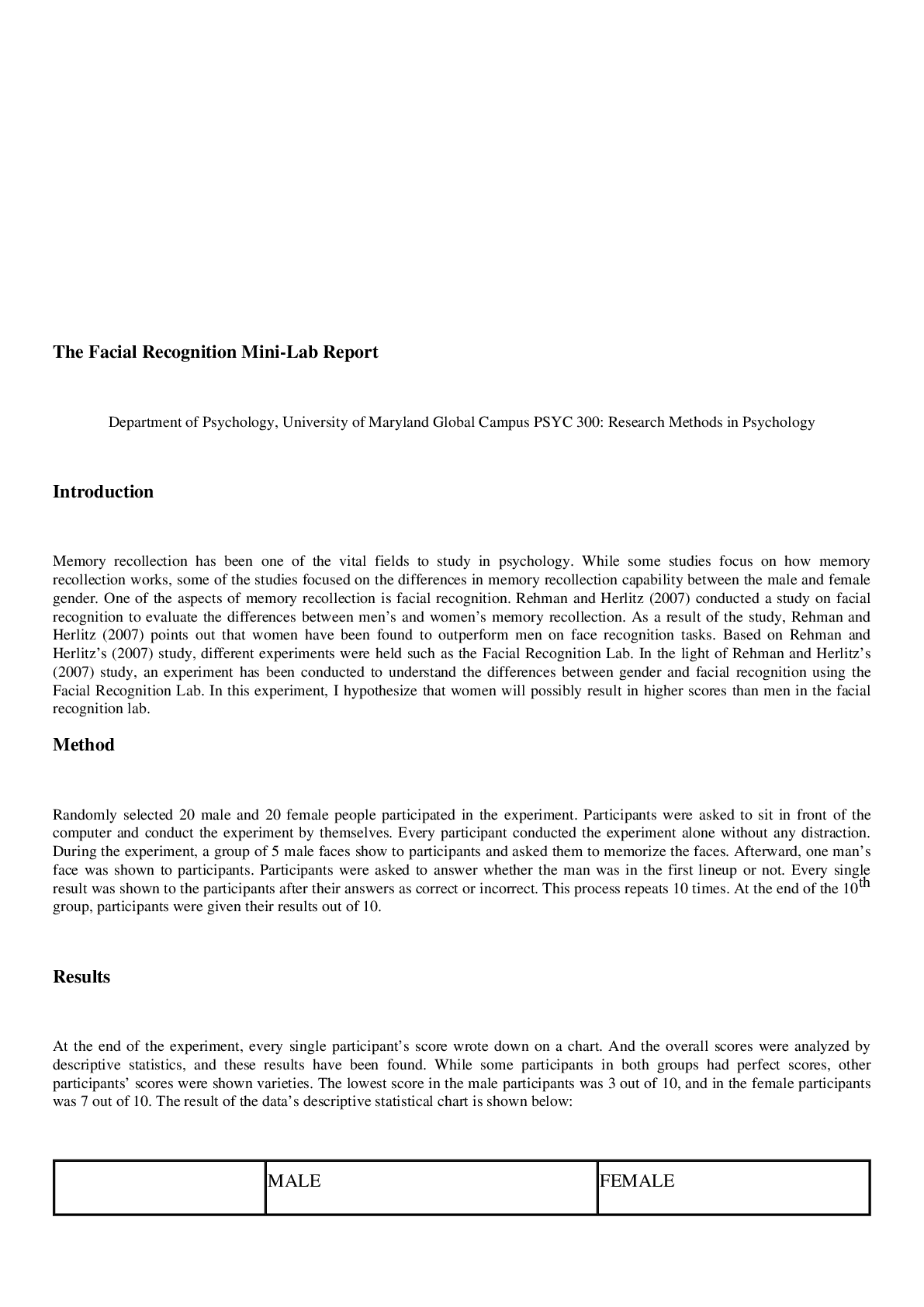
 (1).png)
